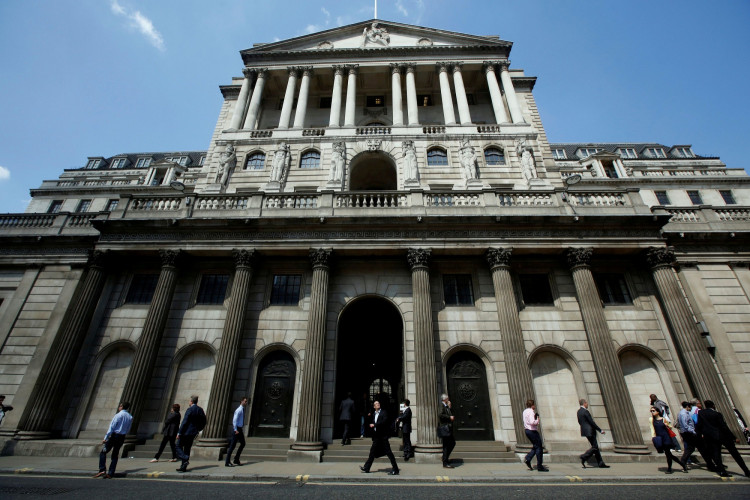Following an unexpected 50-basis point hike in June, the Bank of England (BoE) has once again raised its rates, albeit at a slower pace, influenced by recent cooled inflation data.
On Thursday, August 3rd, the BoE announced an anticipated 25-basis point hike, consistent with economists' predictions. This brought the key interest rate up to 5.25%, the highest level since February 2008, marking the 14th consecutive rate increase since December 2021.
The UK, currently the most inflation-affected among major economies, has recently seen improvements. Data published in late July showed that the UK's June CPI rose by 7.9% year-on-year, falling below 8% for the first time in over a year and hitting the lowest since March 2022. It was also the first time in five months that inflation had come in under forecasts. This is a significant slowdown from the peak of 10.1% at the start of the year, but it remains almost four times the BoE's 2% target.
In the minutes from Thursday's meeting, the BoE hinted at maintaining high interest rates for a longer duration, even if inflation returns to normal levels, and wouldn't immediately begin to cut rates. The Monetary Policy Committee (MPC) "will ensure the bank rate maintains enough restrictiveness for a sufficient period to sustainably return the inflation rate to the 2% target," the minutes read.
BoE Governor Andrew Bailey stressed the importance of low and stable inflation for the UK economy. He predicted that inflation would likely continue to decrease this year. The influence of energy on inflation is expected to turn negative, while uncertainties about non-energy inflation are increasing. Despite an expected drop in food prices this year, inflation in the service sector "remains high," and the MPC is closely monitoring the data.
Disagreements within the MPC on the direction of interest rates are deepening. Out of the nine members, two voted in favor of a 50-basis point increase, while one wished to maintain the current rates. The remaining six, including Governor Bailey, voted for a 25-basis point hike but warned that further increases could severely impact households and businesses.
In his speech following the rate decision, Governor Bailey said that policy needed to remain restrictive and would not predetermine the course of rates, but would adjust them based on data. If inflation persists, further tightening of monetary policy could occur.
"Inflation is falling, which is good news. We know that inflation hits the least wealthy the hardest, so we need to make absolutely sure that the inflation rate falls back to the 2% target. This is why we have raised interest rates to 5.25% today," Bailey said.
The BoE also noted that easing inflation might take more time than anticipated.
The bank forecasts that by the end of the year, the CPI increase might slow down to around 4.9%, but reaching the 2% target could be delayed until the second quarter of 2025, further postponed from its May prediction of Q1 2025.
The BoE reiterated its previous stance that the UK economy would not fall into recession and upgraded this year's GDP growth forecast from 0.25% to 0.5%.
However, considering that the effects of rate hikes will permeate the economy from next year onwards, it expects relatively sluggish economic growth in the subsequent years, with GDP increasing 0.5% in 2024 and only 0.25% in 2025, a downgrade from May's forecast of 0.75%.
After the data release, the GBP/USD pair widened its losses, and UK government bonds recovered from their decline. The GBP/USD dropped 0.36% to 1.2673, while the yield on 10-year UK government bonds held steady at 4.40%. The currency market lowered its bet on the BoE raising rates, with the peak rate projected to be 5.77%, down from 5.82% before the policy decision.






